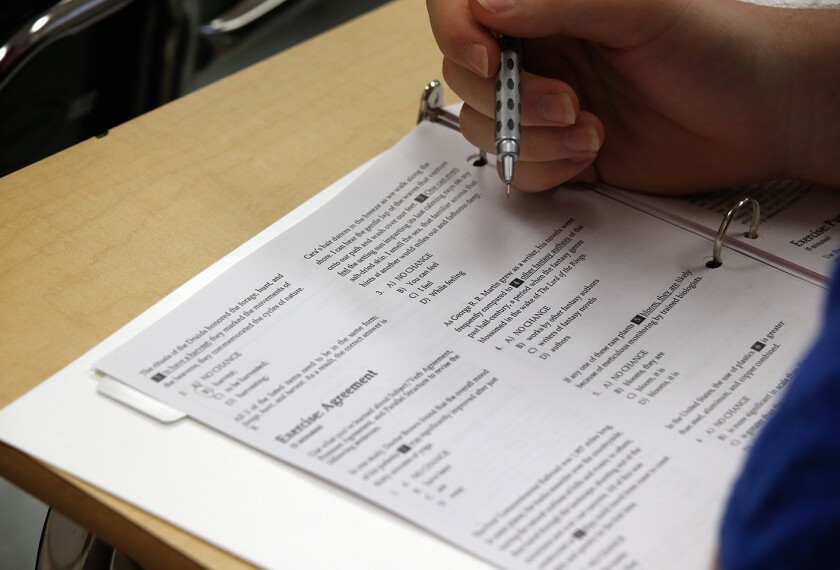The proportion of 13-year-olds taking algebra has grown steadily for at least two decades, but the increase in the number of students taking harder mathematics classes is not translating into higher average math scores by 17-year-olds on the National Assessment of Educational Progress, according to long-term trend data released today.
Average scores for 9- and 13-year-olds in math on NAEP have risen since 2004, but scores in that subject for 17-year-olds have not budged significantly since then.
In fact, flat scores in math for the older students have persisted since the early 1970s. That’s despite the fact that the proportion of 13-year-olds taking algebra has more than doubled—from 13 percent to 30 percent—from 1986 to 2008.
Meanwhile, reading scores increased for 17-year-olds since 2004.
“If you ask me, what is the single most perplexing problem since I’ve gotten involved in education, that’s it,” Darvin M. Winick, the chairman of the National Assessment Governing Board, which oversees NAEP, said in a telephone interview. “The data is not only flat, but it is flat while the kids are taking more math.”
Mr. Winick noted that NAEP does not provide an interpretation of why average scores rise or stagnate.
One reason that scores for 17-year-olds have stayed flat for more than three decades could be that the kinds of students educated today differ from those educated in the early 1970s, he said.
Back then, Mr. Winick said, “if a young person wasn’t doing well, they’d be sent to the farm or the docks.”
Now, he said, it’s possible that a greater proportion of students who might have dropped out of school in past decades to join the labor force, who perhaps are less inclined toward academics, are in schools.
Another possibility why average math scores are increasing for 9- and 13-year-olds and not for 17-year-olds may be that the lion’s share who benefited from state school reforms haven’t yet turned 17, he said.
David P. Driscoll, a former commissioner of education in Massachusetts and a member of NAGB, said he believes systemic problems in U.S. schooling are keeping older students from doing better on NAEP than younger students.
“There’s still this great concern, particularly in mathematics, that our curriculum is a mile wide and an inch deep,” he said. “The depth of understanding isn’t there, when we look at our Asian counterparts.”
Reading Scores Rise
The story is slightly different for reading.
Reading scores increased 3 points, to 286, for 17-year-olds from 2004 to 2008, which is considered statistically significant. That differs from the math trend for 17-year-olds, in which the change in scores during that period is not considered significant. But, as is true with math, the reading scores for 17-year-olds in 2008 were not considered significantly higher than those in the early 1970s.
In both reading and math, average scores climbed a significant amount (by at least 2 points) for 9-year-olds and 13-year-olds. They increased 4 points, to 220, for 9-year-olds in reading and 4 points, to 243, in math. For 13-year-olds, scores increased 3 points, to 260, in reading and 3 points, to 281, in math.
The long-term trend NAEP data show that most gender gaps in both reading and math have stayed about the same since the early 1970s. Across all three age groups, girls outperformed boys in reading in 2008. In two of the three age groups assessed—13- and 17-year-olds—boys scored higher than girls in math that same year. In math, 9-year-old students of both genders scored about the same.
Racial and ethnic achievement gaps, however, show a different pattern. Most such gaps have narrowed in both reading and math since the early or mid-1970s. But they did not change significantly in either subject from 2004 to 2008.




